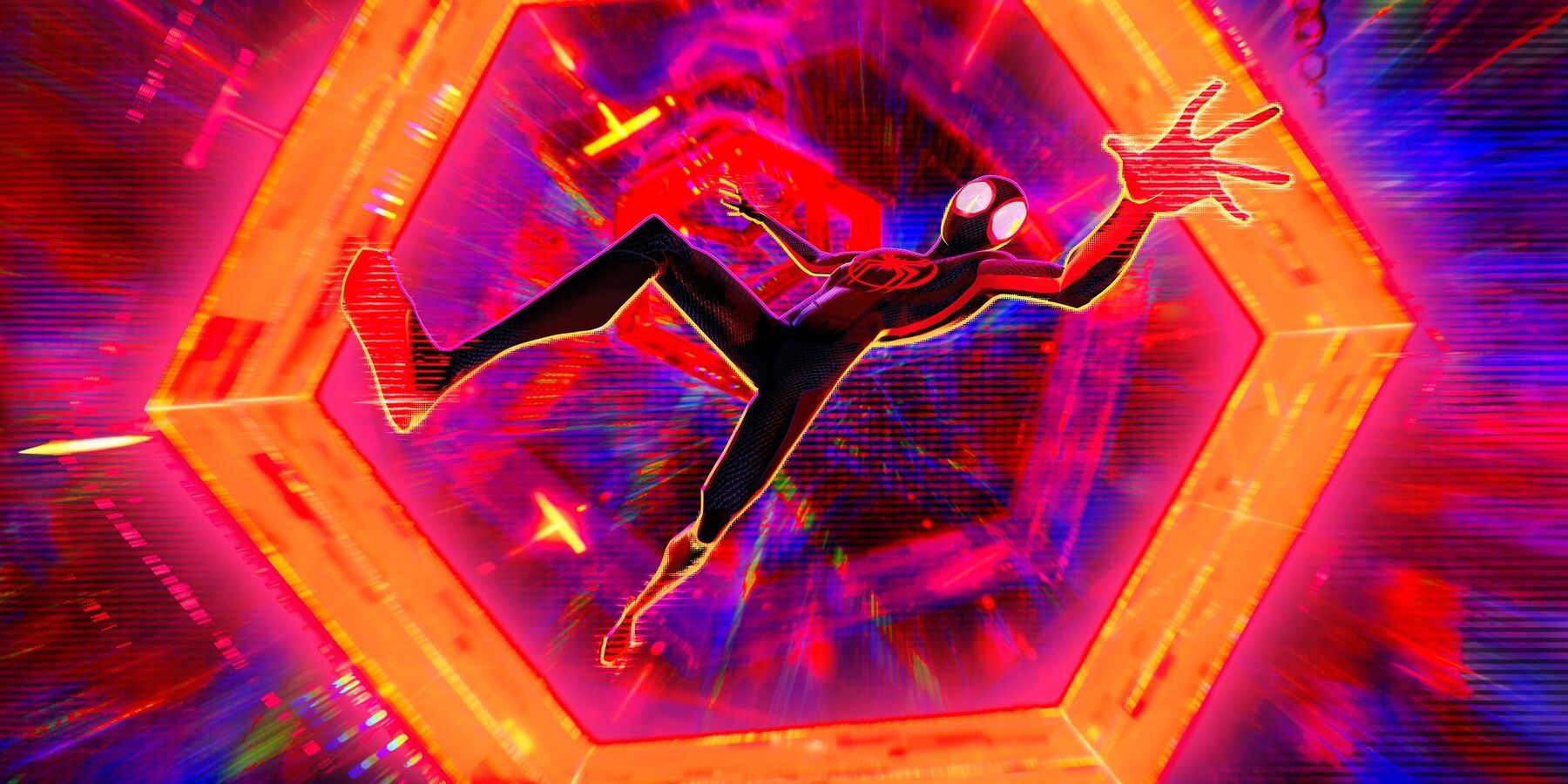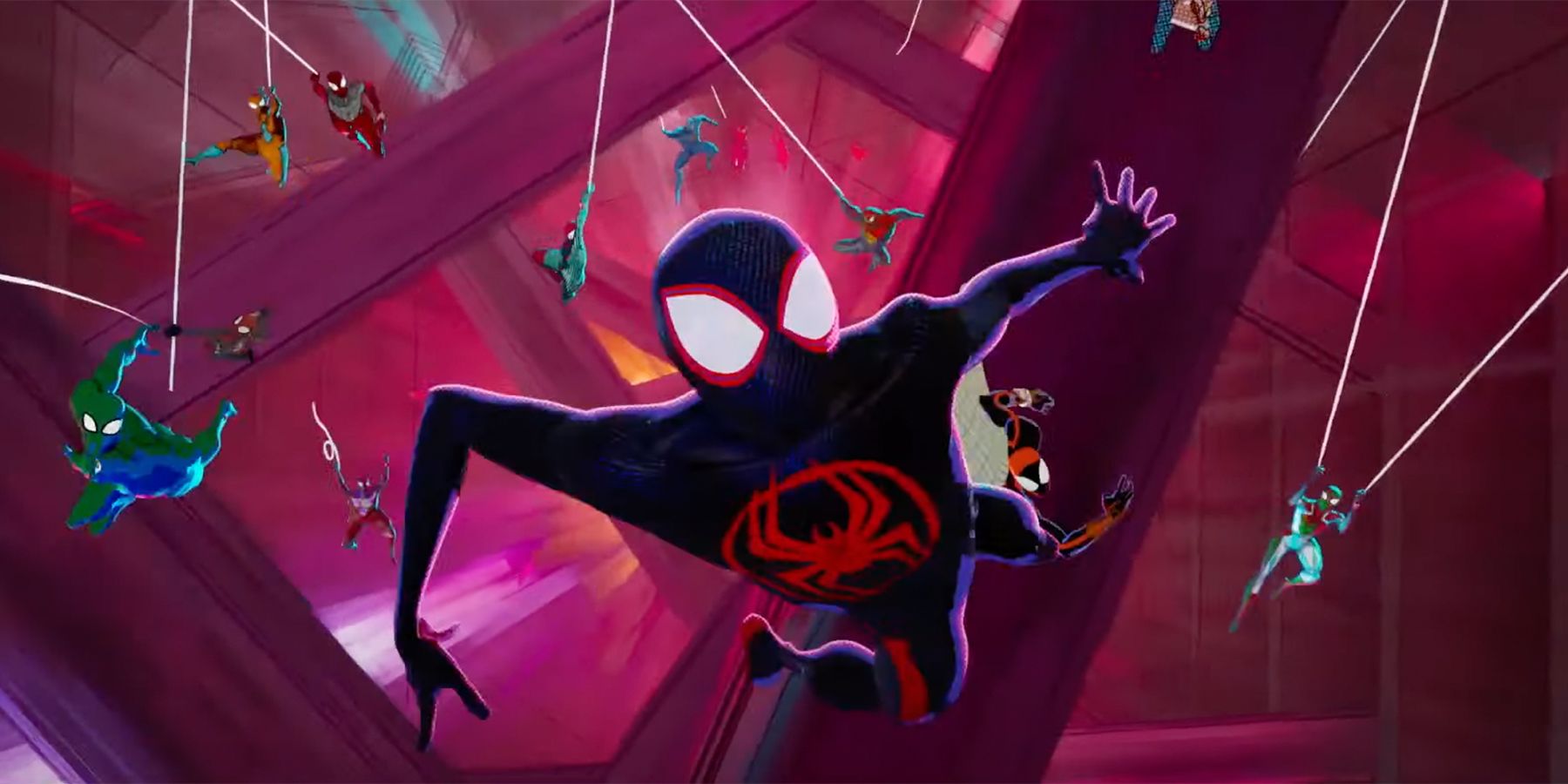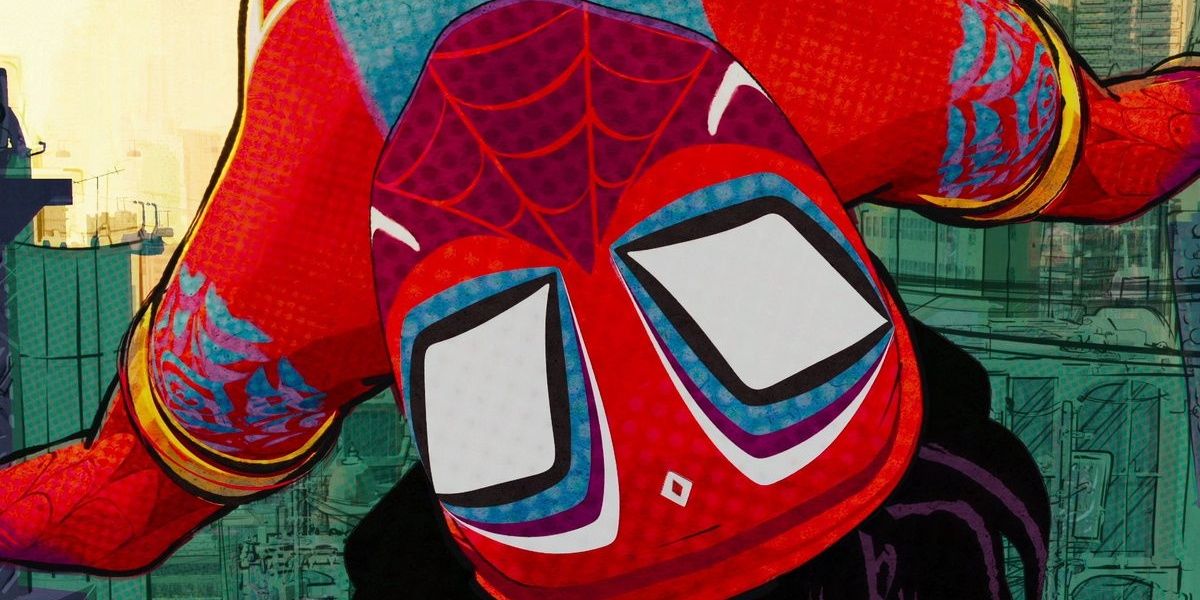If there is one thing that Spider-Man: Across the Spider-Verse does well (and it does many things well), it's serving as both a new Spidey story and a celebration of the wallcrawler's vast and varied history. While that can sometimes be to the story's detriment, it's hard not to enjoy a movie that packs in so much stylish action and real emotion among its characters.
Across the Spider-Verse lines up a new trio of directors in Joaquim Dos Santos, Kemp Powers, and Justin K. Thompson, who worked with a script from Phil Lord, Chris Miller, and Dave Callaham (only Lord had a writing credit on the previous film). The team manages to build on the established Spider-Verse style while folding a massive amount of lore and multiverse-building. It doesn't always come together in a balanced way, and there are some third-act issues that will be familiar to anyone who knows that this is technically a 'Part 1.'
What changes most from Into the Spider-Verse is that this movie belongs as much to Gwen Stacy (Hailee Steinfeld) as it does to Miles Morales (Shameik Moore). The former has much more opportunity for character growth here as she is the spider-hero who opens the film. Her run-in with a renaissance-drawing version of the Vulture leads her to Jessica Drew (Issa Rae), Miguel O'Hara (Oscar Isaac), and the Spider-Society.
Meanwhile, Miles has become more comfortable in his role as Spider-Man, spending a little over a year as his version of New York's webhead. Of course, as with almost every Spider-sequel, this has led to the same set of problems, mainly trying to balance the work of being a superhero with everyday life and preparing for college. It's a familiar conflict that fans have seen play out before with all of the various versions of Peter Parker. While Across the Spider-Verse doesn't bring a lot of novelty to this particular part of the story, it's still compelling enough. Complicating things further is The Spot (Jason Schwartzman), normally a minor foe who is majorly powered up here to be far more menacing (though he is still pretty foolish in the early going, which Schwartzman nails with his vocal performance).
Spot's dastardly plan is both the thing that strains Miles's relationship with his parents and brings Gwen back into his life. Seeing Gwen and Miles together is heartwarming, and the scenes of them playfully swing through the city are vibrant and kinetic. Both Moore and Steinfeld nail the more subtle emotional aspects of their characters, especially when their feelings are just about to bubble to the surface, only to be shoved back down again.
All of this falls just in the first act of the movie, which might be indicative of one of its main flaws. While the action keeps everything moving at a breakneck pace, Across the Spider-Verse can sometimes feel like a little bit too much. There are moments when it feels like the story should slow down just to give viewers a second to catch up with everything, but before a moment can really land, it's on to the next big thing. It's an odd juxtaposition considering that the opening act seems to be taking its time with everything. However, once the movie jumps to Mumbattan and introduces Karan Soni's Indian Spider-Man and Daniel Kaluuya's Spider-Punk (an absolute standout in a crowded field), there's almost no time for the movie to catch its breath.
The mid-movie arrival at the Spider-society is where the pace seems to even out, allowing Miles some time to acclimate to his surroundings (and take in a few gasp-worthy cameos). Here is where eagle-eyed audience members may try to pick out all of the various Spider-People from across all forms of media. Luckily, the ones that most people will be searching for aren't necessarily hidden away. It can still feel like a little bit too much, as if the movie's ambition for cramming as much as it can into its generous runtime outruns its capacity to keep all of its narrative plates spinning. Once the movie does manage to slow down in its final act, viewers might be too disappointed with the lack of closure to really appreciate some of the movie's finer points.
Stylistically speaking, Across the Spider-Verse still looks amazing. The blending of various art styles is impressive enough, but even just how textured and alive everything else feels, like Miles's Brooklyn neighborhood and an evening rooftop party is enough to sell the movie. It's a shining example of how far animation can go when it isn't limited to the typical CGI style that has overtaken the market in recent years (along with Puss in Boots: The Last Wish). There are plenty of blink-and-you-miss-them visual gags like billboards for alternate universe movies (the best picture winner in Miles's world may have likely been All the Things, All the Places, All of the Time).
Spider-Man: Across the Spider-Verse isn't nearly as lean as its predecessor, and in trying to pack in even more surprises, it sometimes buckles under the weight of its ambitions. However, the action is fast-paced and exciting, the characters are still worth rooting for, and there's a balance of humor and heart in the dialogue. It may up for debate whether this tops Into the Spider-Verse or not, but with two entries in the series, it's safe to say that Spider-Man's animated story may be the one to beat from now on.
Spider-Man: Across the Spider-Verse opens in theaters on June 2nd.



